Castle and Cathedral in Prague, multiple palaces and panoramas
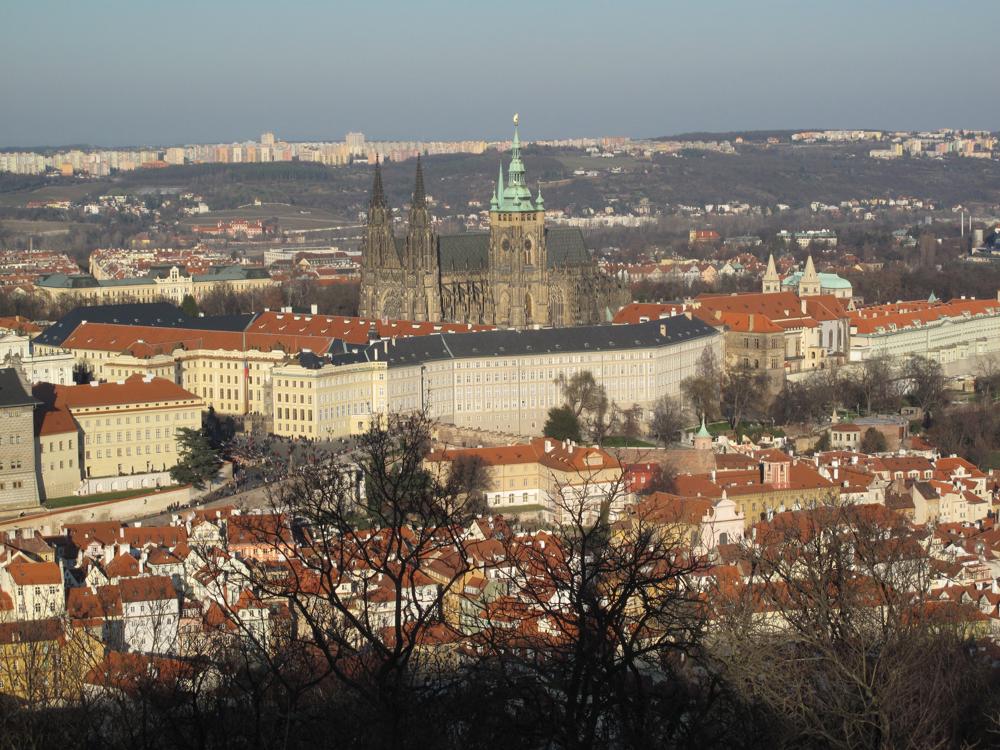
Plan a all day and comfortable shoes for this tour. It is long, but worth it, you will see grandiose monuments and of unforgettable panoramas over the city.
This itinerary begins at the famous Charles Bridge and take you to see the main munuments of the Castle District (Hradčany). This area is certainly historically speaking the most important of the Czech Republic. In the ninth century this was already the residence of Premyslid princes who then ruled the kingdom of Bohemia. Around their residence, a fortress was erected as a protection.
Click on the map below to see the interactive map. We tried not only to describe the itinerary, but also to give you explanations about the monuments that you will see throughout this tour.
Between Charles Bridge and the Prague Castle area
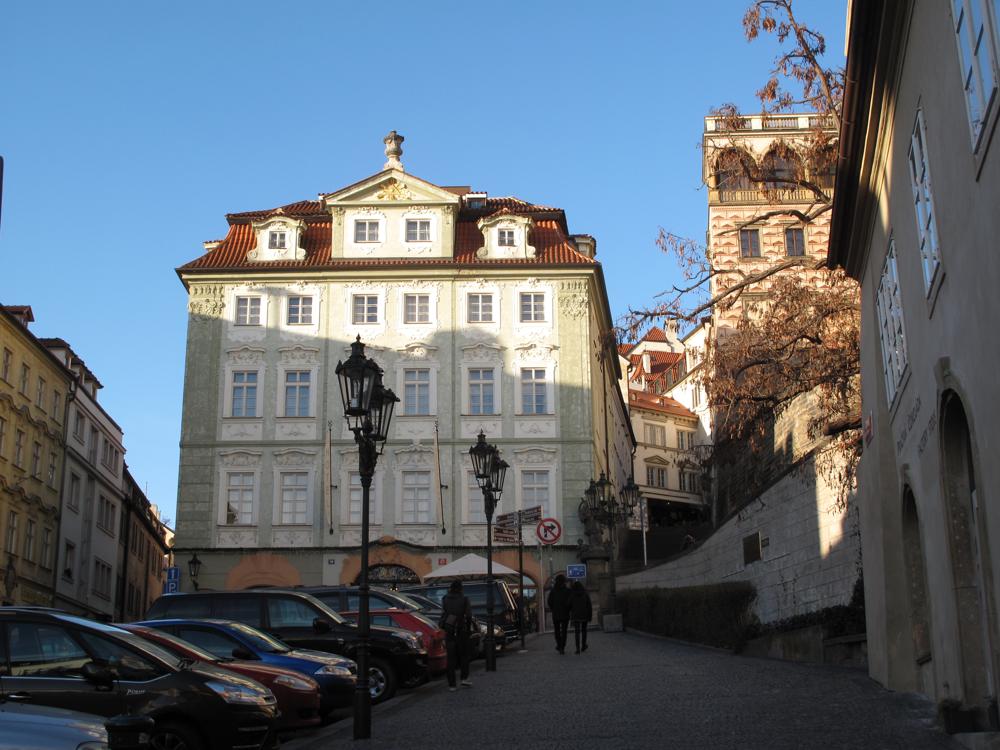
To begin, follow the route indicated on the interactive map above. From the bridge, go straight on the street Karluv Most, then into Mostecká and Malostranské nám.. After that, follow the street Nerudova, quite long and lined with pretty houses. At the end of this street (photo above), climb the stairs and go into the street Ke Hradu, which will take you right to the Prague Castle.
Prague Castle
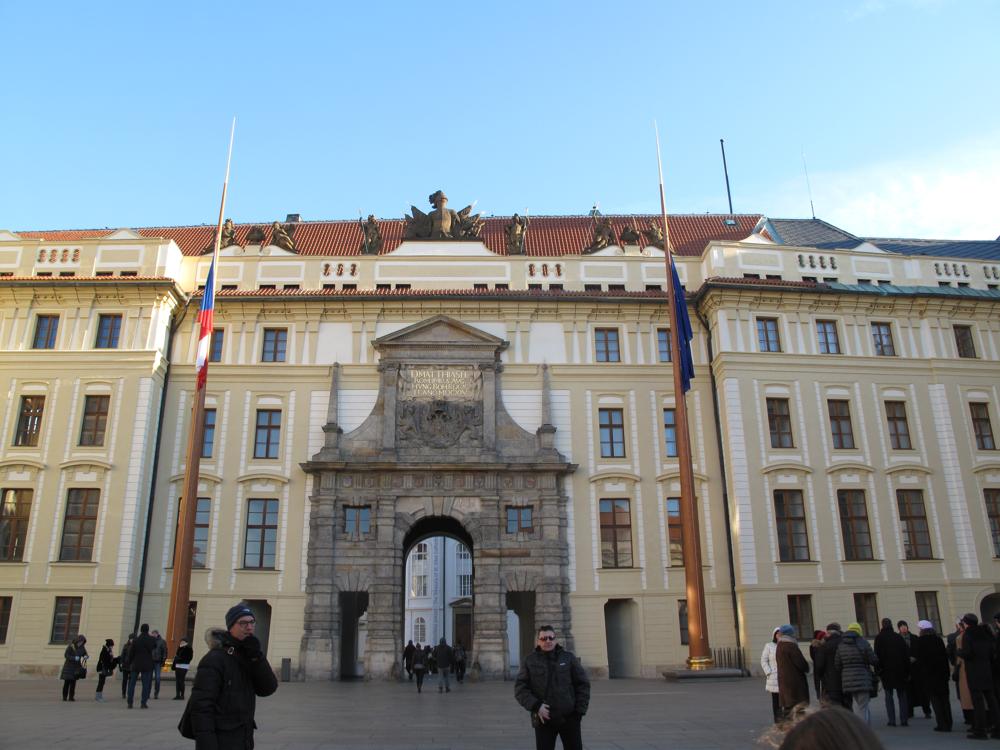
Prague Castle might be the largest castle in the world. It is about 570 meters long and 130 meters wide. It is located in the district bearing the name "Hradčany", meaning castle district, which actually conceals a veritable small town inside the city of Prague! The streets of the Castle area are rather picturesque. You will find the castle, but also the St. Vitus Cathedral, St. George's basilica (Romanesque basilica), several palaces, cloisters, fortifications, museums, etc.
Royal residence, and then imperial, the caslte was modified over the centuries. The main actors of those changes are the Emperor Charles IV (fourteenth century), King Vladislav Jagiello (late fifteenth and early sixteenth century), the Habsburg Emperor Rudolf II (sixteenth and early seventeenth century), and Empress Maria Theresa Habsburg (eighteenth century). After the fall of the Austro-Hungarian Empire in 1918, it became the seat of the President of the Czechoslovak Republic and is now the official residence of the Czech president.
Pass the castle entrance gate and enter the first court, then the next one. Here you will find the St. Vitus Cathedral.
St. Vitus Cathedral (Katedrála svatého Víta)
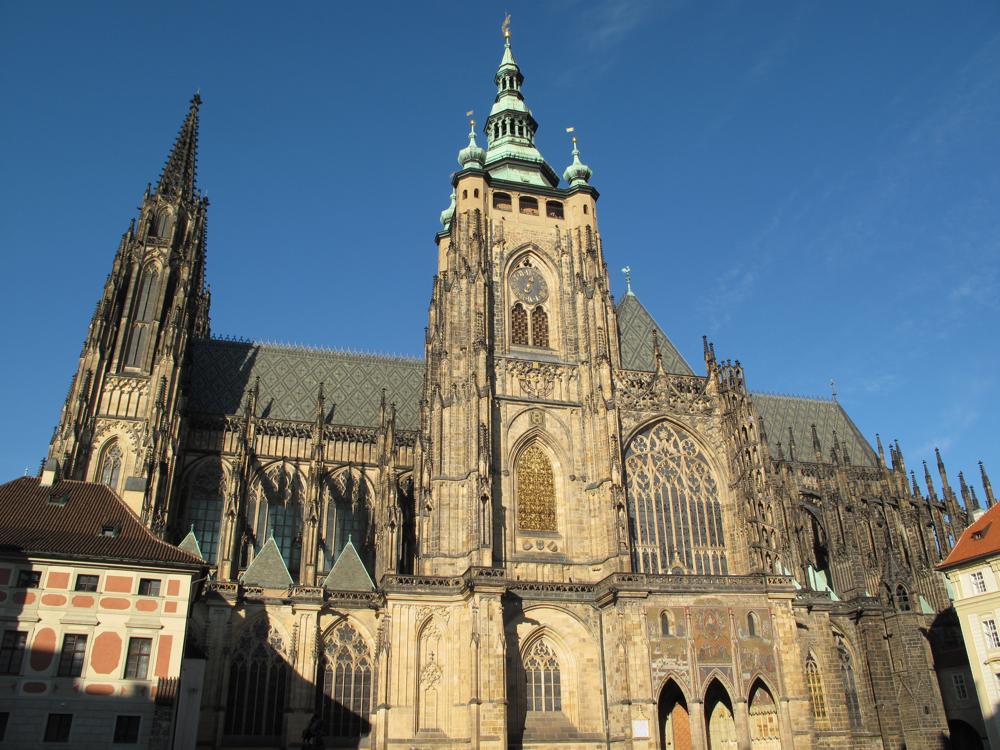
Before the cathedral was built, there was in that place a stone rotunda (dating from the tenth century), and then a Romanesque church. The Emperor Charles IV initiated the construction of the Cathedral in the Gothic style in the fourteenth century, for it had to become the symbol of the newly created archdiocese to reflect the rank of Prague, which was at that time the capital of the Empire. St. Vitus Cathedral is probably one of the most beautiful Gothic cathedrals in Europe! 600 years were required to complete it. It was not until the early twentieth century that the cathedral was completed ...
The cathedral is the seat of the Archbishop of Prague. You can admire a beautiful fine and typical high Gothic nave, a beautiful rose window, wonderful stained glass windows, a beautiful organ, a Venetian mosaic (see below), and many other treasures, among them also the mausoleums of great personalities of the Kingdom !

On the south facade of the cathedral, the "golden door", with its majestic Venetian mosaic, leads to St. Wenceslas Chapel, where there is the tomb of St. Wenceslas, the patron of the kingdom of Bohemia. This is also the place where the precious crown jewels are kept, which the public can unfortunately rarely admired.
In front of the south facade of the cathedral , you will find St. Georges Basilica (Romanesque basilica).
St. George's Basilica ( Bazilika sv Jiří ) and its convent (Klaster svatého Jiří)
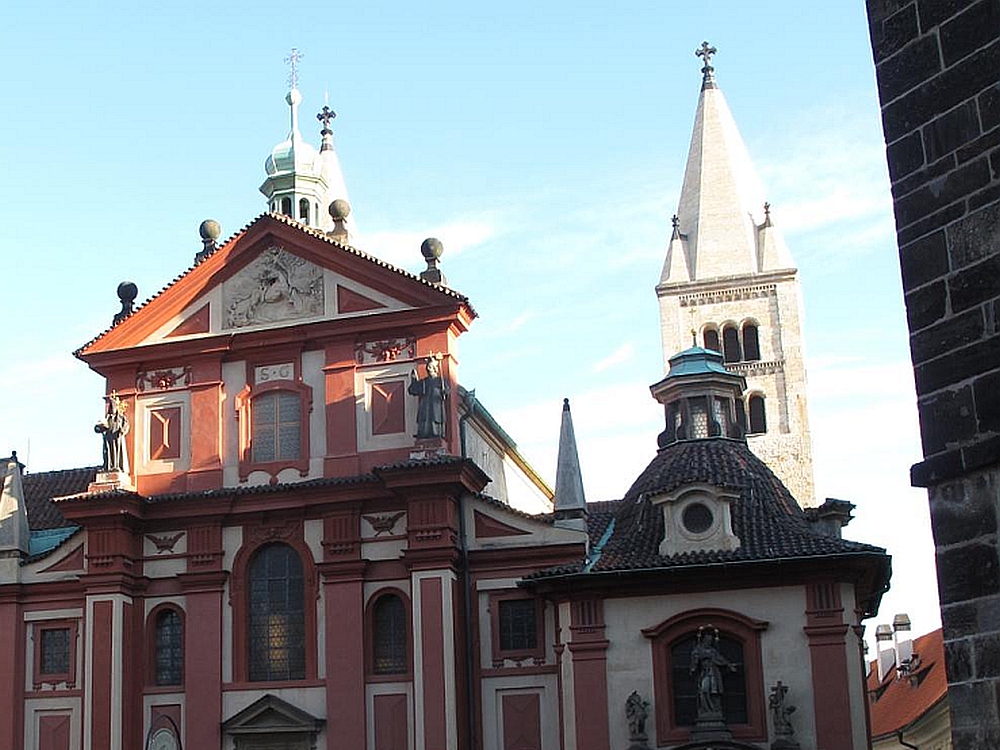
The first church built in this place dates from 920. The St. George's Basilica contains both elements of Romanesque and Baroque style. Its Baroque façade conceals a surprisingly sober interior and the crypt is extraordinary for its simplicity. From a religious point of view, it was of paramount importance in the Middle Ages and served as a mausoleum for the Přemyslid dynasty. The monastery can also be visited. The Benedictine nuns settled there in about 970 and so founded the oldest monastery in Bohemia. It was closed in 1782. It is now part of the National Gallery in Prague and houses collections of 19th century.
The Golden Lane
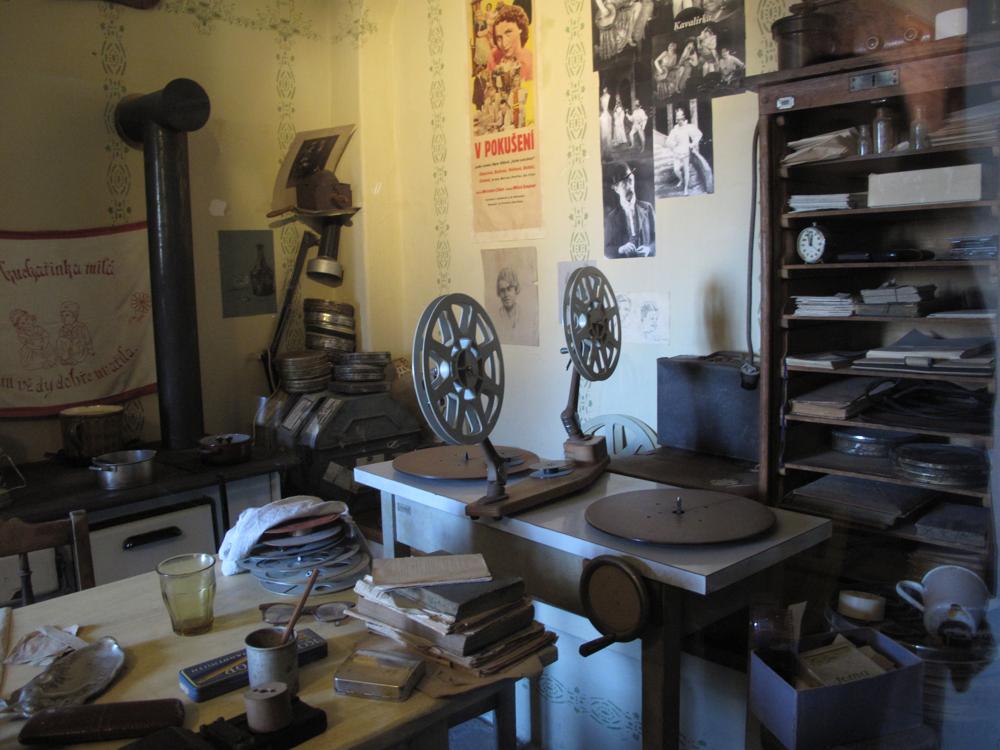
The Golden Lane runs along the castle walls. There are small houses of bright colors, in which elements and some persons of the time are presented, including among others : the house where Kafka retreated to write quietly (house number 22), a herbalist with its plants and working tools, a collector and historian of films of the time Joseph Kazda, etc.
History of the Golden Lane
"The basis of Golden Lane is an irregular strip of land varying in width from four to eight metres between the older, Romanesque walls from the 12th century, and the later walls that form the north fortification of Prague Castle on the edge of natural ravine known as the Stag Moat. Work there was begun by the architect Benedikt Ried shortly after 1484, when King Vladislav Jagiellon decided to leave the Old Town and settle at the Castle.
Attached to the Castle wall (up to 320cm thick) were three defence towers : The Powder Tower (or Mihulka) on the west side, the Dalibor Tower (Daliborka) on the east, and between them the White Tower. Between Daliborka and the White Tower, the castle wall on the moat side was buttressed by an arcade with 12 identical vaults each of which was about 120cm deep and 600 to 660cm wide. These half-build spaces were used as simple makeshift dwelling. The oldest written reports about them are from the 1560s, when the lane was called Goldsmith's Lane. Its residents were probably lesser goldsmiths who had fled the guild laws which were being strictly enforced in all 3 towns of Prague at the time (Old Town, New Town and Lesser Town).
No substantial repairs were carried out on the northern castle wall until 1591-94, during the reign of Rudolf II. At that time, the upper arcade structure rose to the level of today's Golden Lane. There were now 21 arches between the White Tower and Daliborka, each 400cm wide and 220cm deep on average. They were separated by pillars about a metre wide. Above them, a walled passage with a raftered ceiling was built. The earlier houses were undoubtedly torn down at that time, and their remnants vanished into the raised rampart of the moat.
In 1597 the 'artillerymen at the gates of Prague Castle' asked Emperor Rudolf II for permission to build little rooms within the newly repaired walls. In a decree, dated 16th September 1597, Rudolf allowed them to be built. The "Red Artillerymen", as they were nicknamed because of the colour of their uniform, did not, however, receive the dwellings as gifts. They had them build at their own expense and also bought and sold them, first amongst themselves, and then with others who were not members of their corps. At first, these included various employees of the Castle (such as gatekeepers, guards, and bell-ringers) and later, people who did not live in Golden Lane but rented the little houses to others.
It was not long before the little houses began to expand into the lane with their additions and fireplaces. New additions were made also in the adjacent Romanesque wall and the wall of the Lord High Burgrave's residence. The street ultimately became so cramped that in some places it was less than a metre wide. Soon afterwards, in the slum clearance of 1864, all those extensions, stalls, and wooden sheds that had stood on the opposite side of the lane were demolished, and only the little houses along the north wall were left standing.
After World War II the Office of the Czechoslovak President expropriated the little houses from their owners. The overall arrangement of Golden Lane was completed in 1955 under the direction of the archited Pavel Janák.The coloours of the facades were chosen by the painter and animator Jiří Trnka.
The last general reconstruction of Golden Lane was carried out in 2010-2011 when a new drainage system was build and the paving was renewed. The tiny houses were underpined and repaired. Many valuable elements were also restored in the Defence Passage and the White Tower. All of the colour facades designed by Trnka were renewed."
The herbalist 's house (house number 27)
"An essential skill that was always managed by one of the servants of the Castle, was the ability to treat wounds, cure diseases and provide assistance to the suffering. Such folk healers and herbalists often had enough experience to carry a certificate stating that someone was successfully cured by them. Their help was sought after not only by members of the community of the Castle, but often the nobility. In addition to the rational approach to the treatment, the herbalists used methods of magic and incantation. The more common method of healing, however, was through the use of herbs and botanical extracts. The conviction of their usefulness was strengthened by the publication of herbariums, of which Mattioli's Herbarium, translated by Tadeáš Hájek of Hájek in 1562, was one of the most popular.
The apparence of the herbalist's household in many respects resembled an apothecary. In bottles, jugs and boxes were all sorts of juices - nectars from plants, purgatives and tonic opiates. Powders in boxes were for curing teeth, for the throat and for roundworms. Also in boxes were plasters, seeds and 'sugar-coated flowers'. The trunk or cupboard contained arrangements of 'snail shells', 'human craniums', pig's teeth, bones from the 'sea spider' (octopus) and dried frogs. The ceramic jars never lacked lards from dog, human, tom cat, stork, rabbit, bear and snake'."
The towers at the end of the Golden Lane
They were built in the late fifteenth century in order to protect the castle. They had guns to defend the caslte. In 1586, one of the towers, the White Tower was rebuilt and converted into a prison. The prisoners housed in the upper floors and the ground floor was used as a torture chamber. From the 18th century, the White Tower ceased to be used as a prison. The Dalibor Tower was a much safer and more frightful jail than the first one. The last prisoner was released from this tower in 1781.
After admiring the panoramic view from the foot of the towers ending Golden Lane, go back to the portal through which you entered. By following the road straight ahead, you will admire some more palaces, including those mentioned below.
The Archbishop's Palace (Arcibiskupský palác)
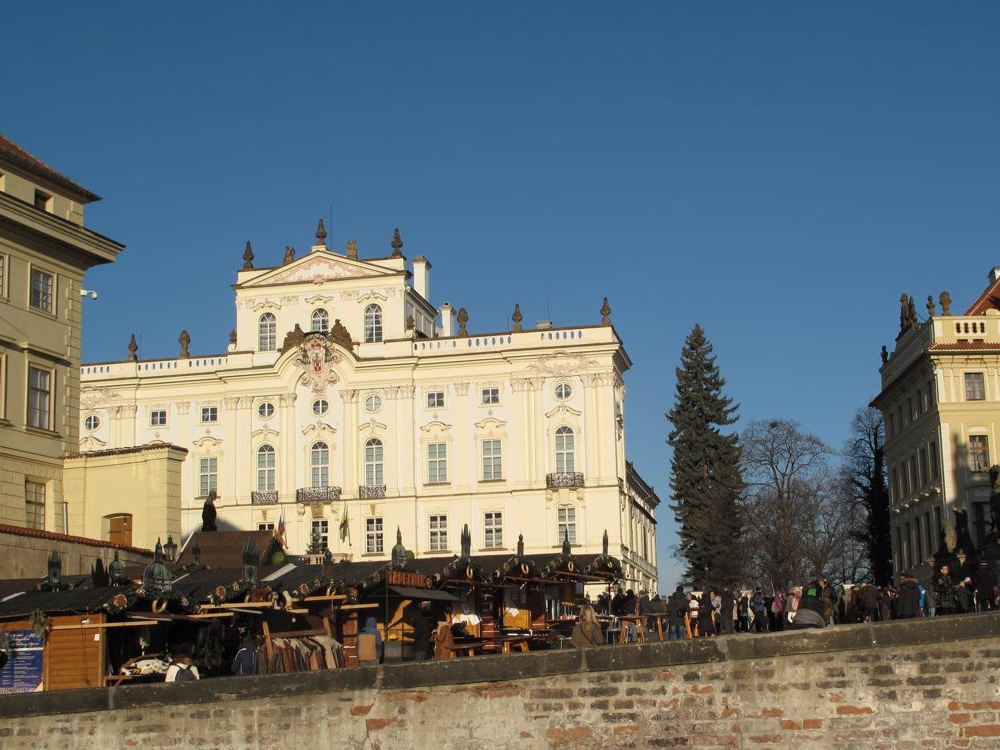
The Schwarzenberg Palace (Schwarzenberský palác)

The Schwarzenberg Palace is a built in the Renaissance style. Today it houses the Military History Museum. It was built for the Lobkowicz family and bought by Schwarzenberg in 1719.
The Palace Tuscany (Toskánský palác)
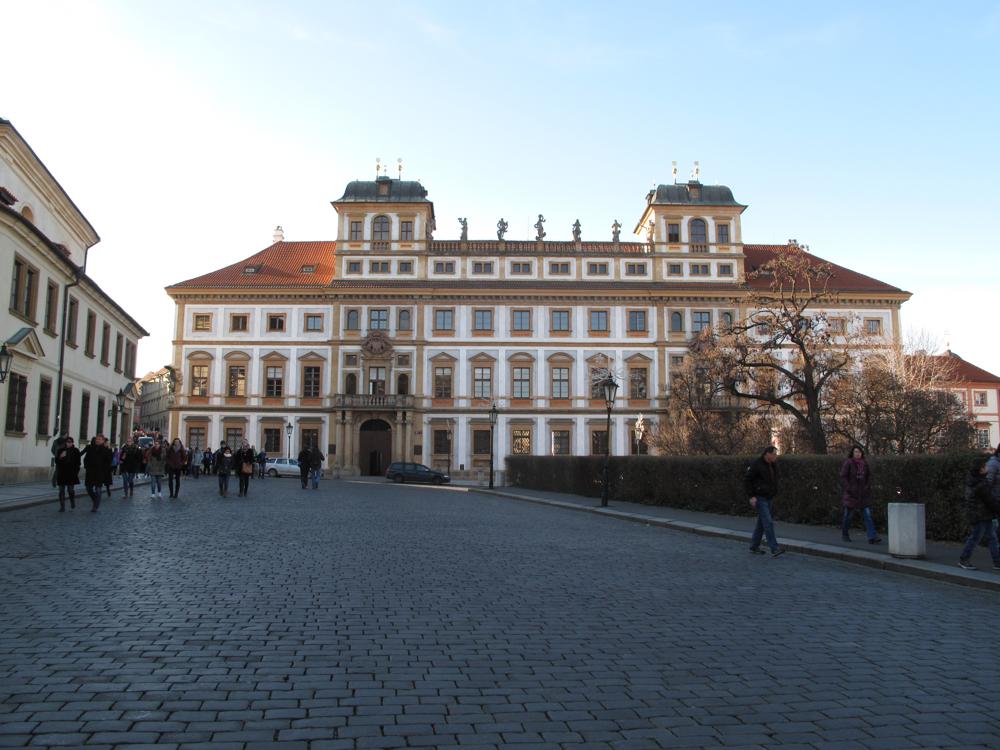
Strahovsky cloister (Strahovský klášter)
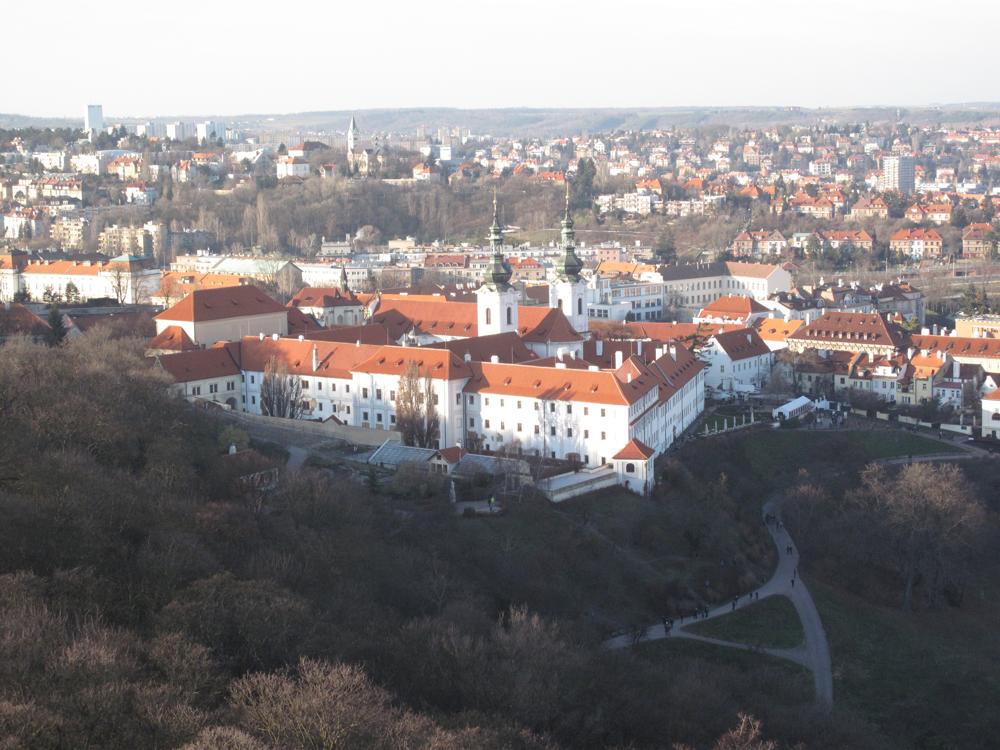

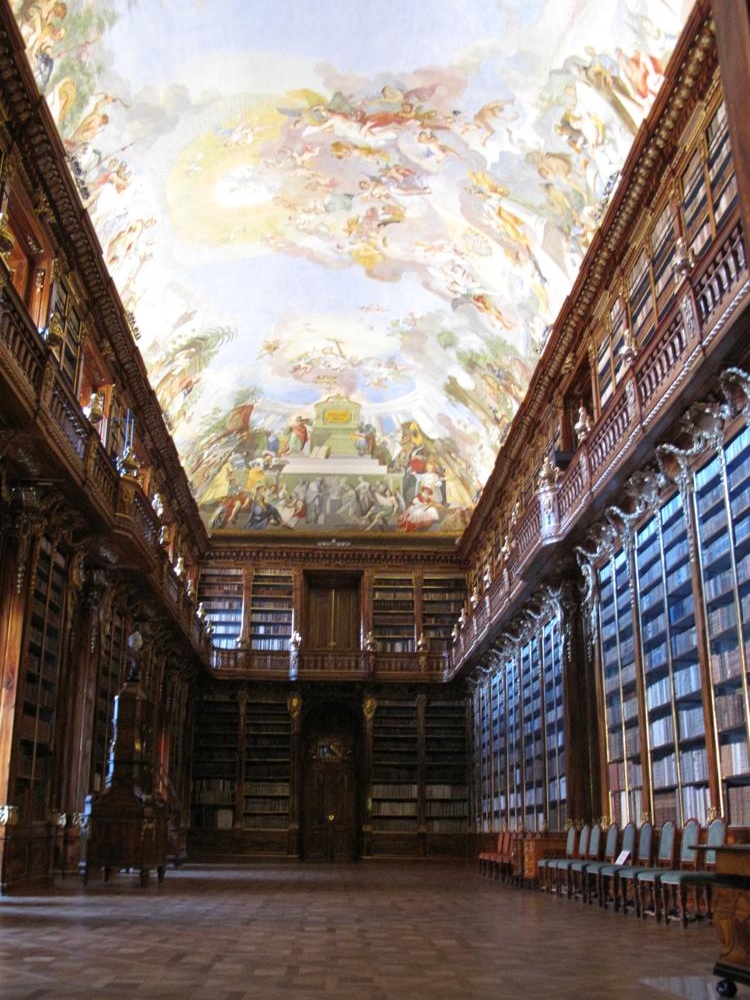
The Petrin Park
Continue your tour by walking into the Petrin park. We invite you to cross the ramparts and climb Petrinska rozhledna, from where you will admire on one side magnificent views of the city and on the other side discover a huge stage (perhaps even the largest in the world?). It is from the top of this tower that the panoramic pictures above were taken.
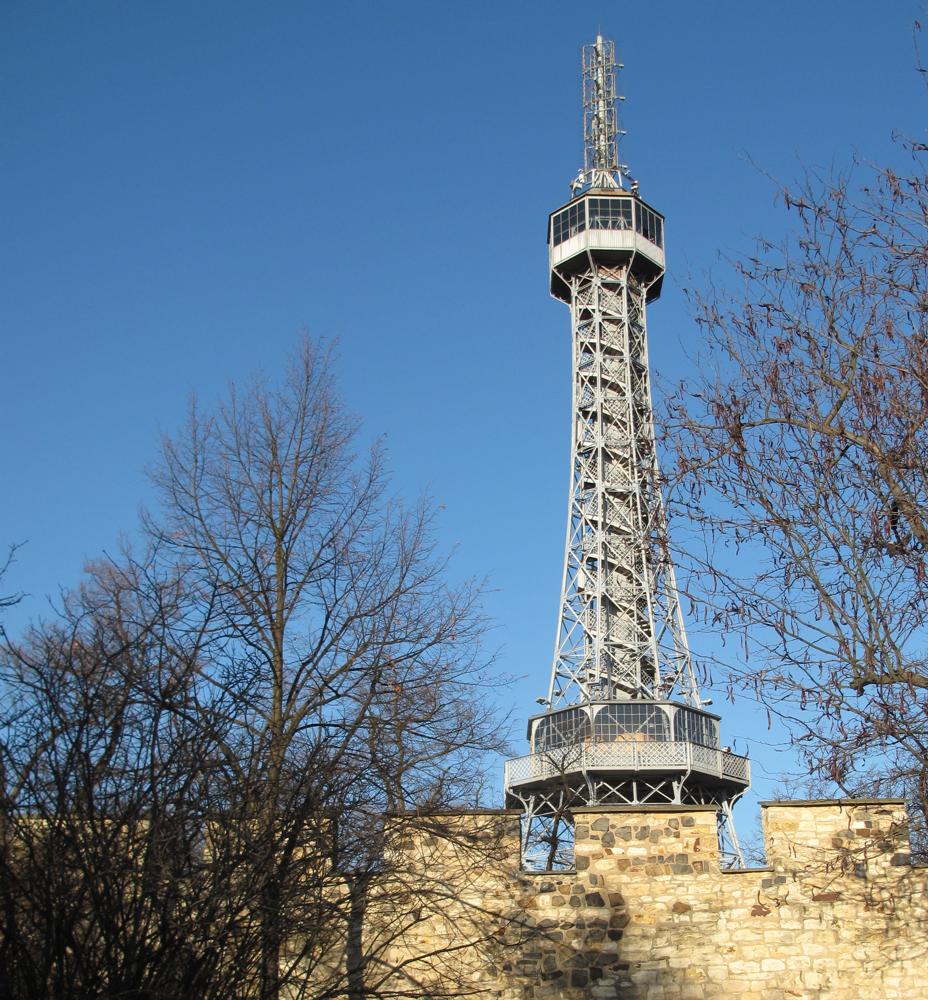
Then, when you get down the hill, don't miss out the cute little Russian chapel before arriving in Malá Strana. This is where our journey ends. We hope that our descriptions and explanations have been helpful to you and that you enjoyed our itinerary !



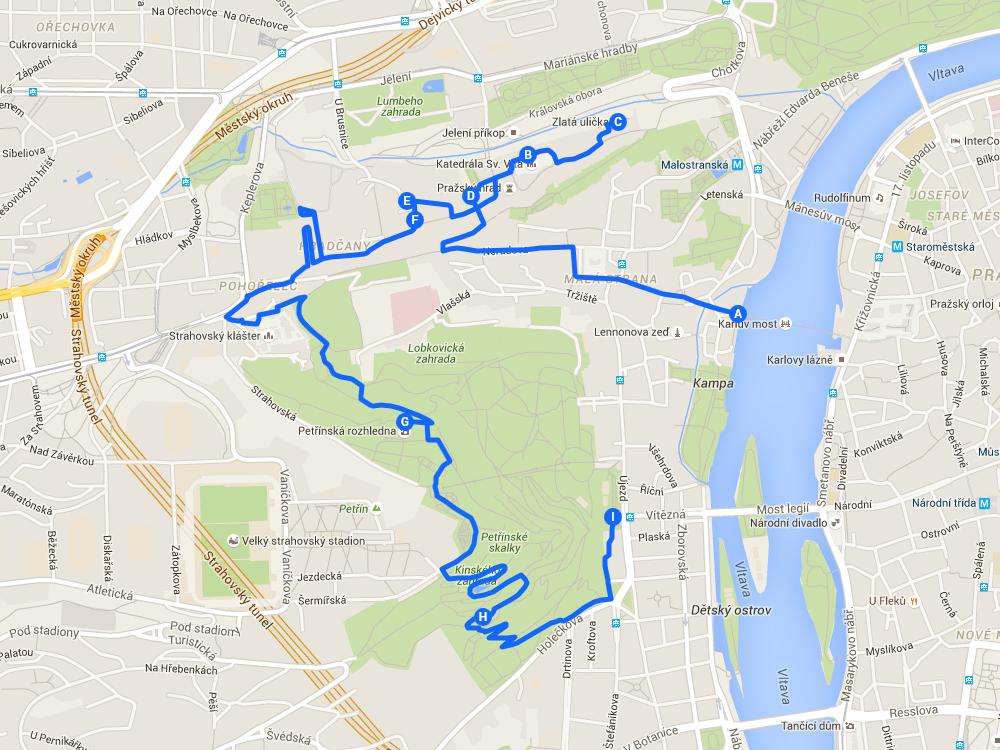 .
.